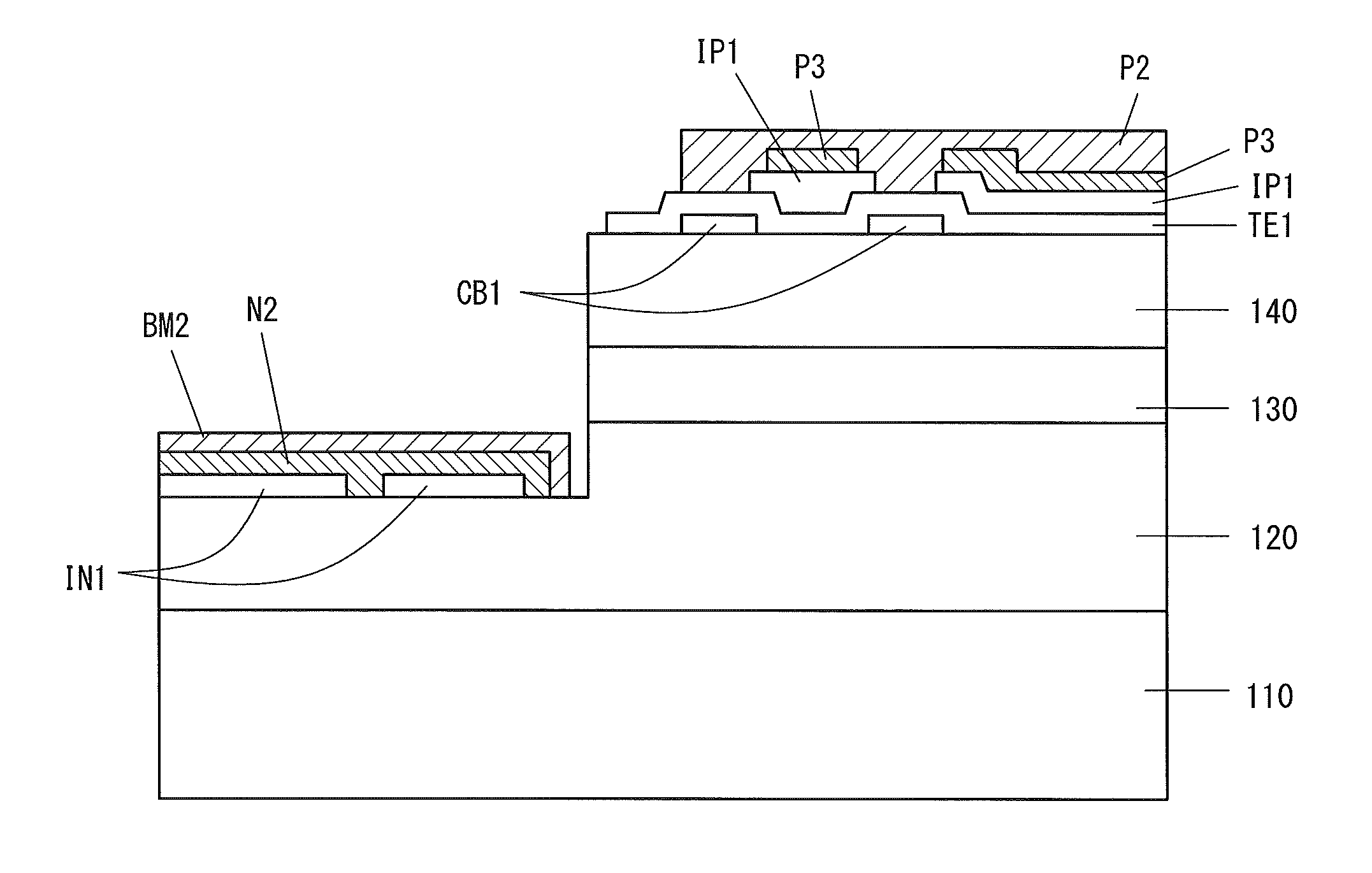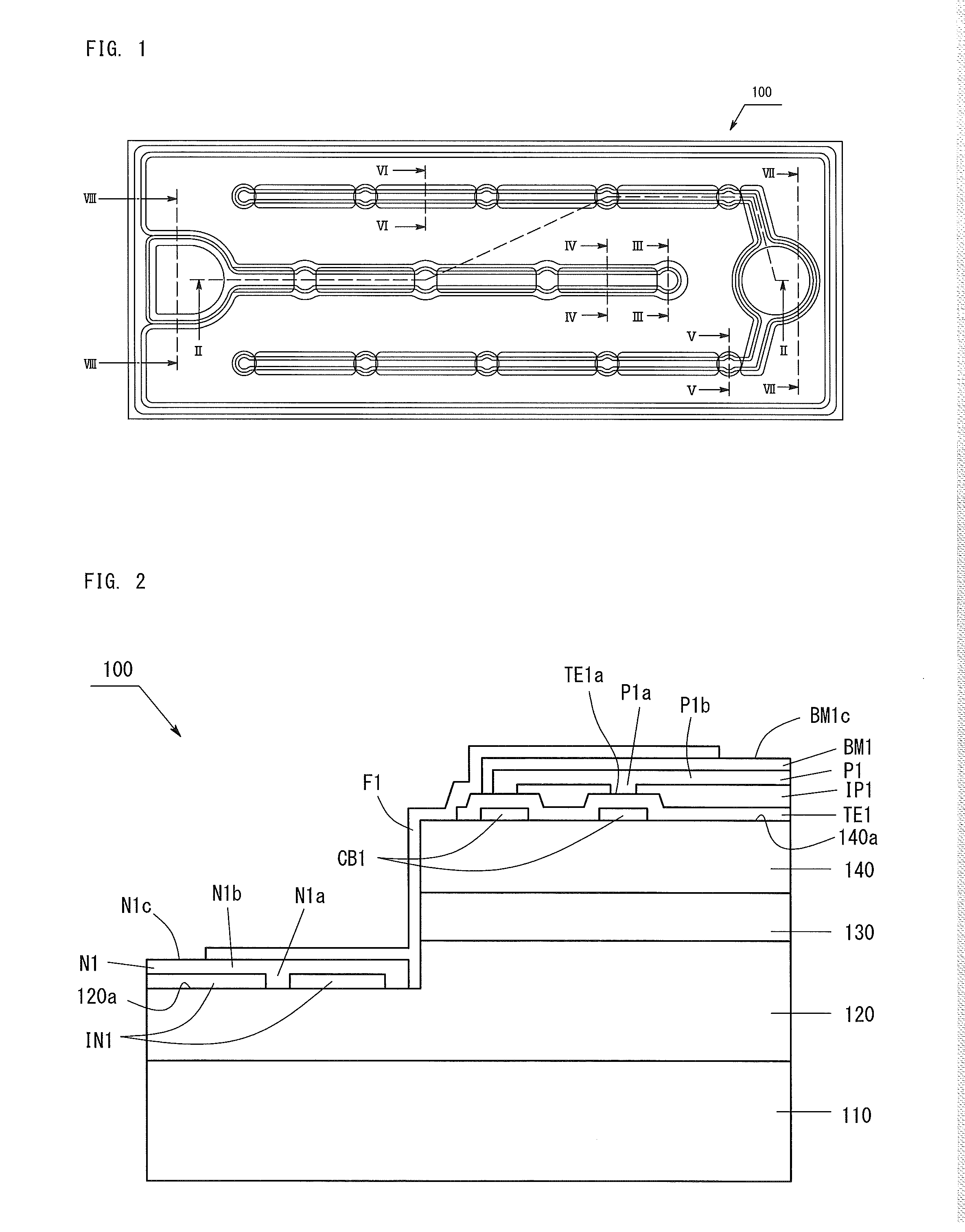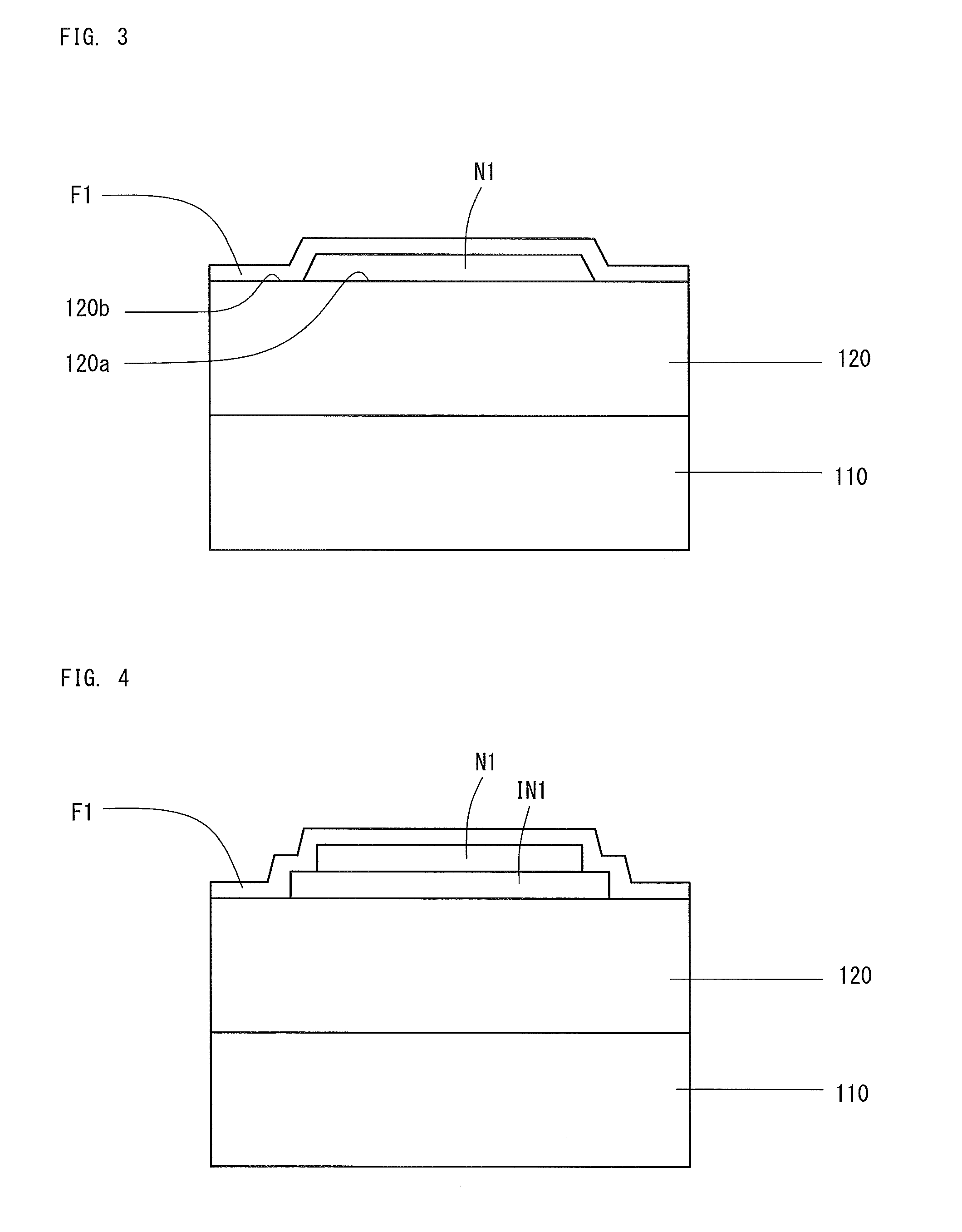Group iii nitride semiconductor light-emitting device and production method therefor
a technology of nitride semiconductors and light-emitting devices, which is applied in the direction of semiconductor/solid-state device manufacturing, semiconductor devices, electrical equipment, etc., can solve the problems of short lifetime of light-emitting devices, inability to suppress the migration of ag atoms or al atoms, etc., and achieve the effect of simplifying the production method
- Summary
- Abstract
- Description
- Claims
- Application Information
AI Technical Summary
Benefits of technology
Problems solved by technology
Method used
Image
Examples
example 1
3-2-1. Example 1
[0084]Next will be described materials of the p-electrode P1, the p-side barrier metal layer BM1, and the n-electrode N1. In Example 1 of Table 1, the p-electrode P1 is formed of α-IZO, Ag alloy, Ta, and Ti deposited in this order on the transparent electrode TEL The thickness of α-IZO is 5 nm. The thickness of Ag alloy is 100 nm. The thickness of Ta is 100 nm. The thickness of Ti is 50 nm. The thicknesses of these layers are merely examples. The thicknesses are not limited to these. Ag alloy is, for example, an alloy containing Ag, Pd, and Cu. Needless to say, any alloy having other composition may also be employed.
[0085]The p-side barrier metal layer BM1 is formed of Ti, Al alloy, Ta, Ti, Pt, Au, and Al deposited in this order on the p-electrode P1. The thickness of Ti is 2 nm. The thickness of Al alloy is 100 nm. The thickness of Ta is 100 nm. The thickness of Ti is 300 nm. The thickness of Pt is 100 nm. The thickness of Au is 1,500 nm. The thickness of Al is 10 n...
example 2
3-2-2. Example 2
[0087]In Example 2 of Table 1, the p-electrode P1 is the same as in Example 1.
[0088]The p-side barrier metal layer BM1 is formed of Ti, Rh, Ti, Au, and Al deposited in this order on the p-electrode P1. The thickness of Ti is 2 nm. The thickness of Rh is 100 nm. The thickness of Ti is 50 nm. The thickness of Au is 1,500 nm. The thickness of Al is 10 nm. The thicknesses of these layers are merely examples. The thicknesses are not limited to these.
[0089]The n-electrode N1 of Example 2 is deposited in the same order as that of the p-side barrier metal layer BM1 of Example 2.
example 3
3-2-3. Example 3
[0090]In Example 3 of Table 1, the p-electrode P1 is formed of Cr, Al alloy, Cr, and Ti deposited in this order on the transparent electrode TEL The thickness of Cr in contact with the transparent electrode TE1 is 2 nm. The thickness of Al alloy is 100 nm. The thickness of Cr is 10 nm. The thickness of Ti is 50 nm. The thicknesses are merely examples. The thicknesses are not limited to these.
[0091]The p-side barrier metal layer BM1 of Example 3 is the same as the p-side barrier metal layer BM1 of Example 3.
[0092]The n-electrode N1 of Example 3 is deposited in the same order as that of the p-side barrier metal layer BM1 of Example 3.
TABLE 1p-side barrier metalp-electrodelayer and n-electrodeExam-Materialα-IZO / Ag alloy / Ta / TiTi / Al alloy / Ta / Ti / Pt / Au / Alple 1Thickness5 / 100 / 100 / 502 / 100 / 100 / 300 / 100 / 1500 / 10(nm)Exam-Materialα-IZO / Ag alloy / Ta / TiTi / Rh / Ti / Au / Alple 2Thickness5 / 100 / 100 / 502 / 100 / 50 / 1500 / 10(nm)Exam-MaterialCr / Al alloy / Cr / TiTi / Rh / Ti / Au / Alple 3Thickness2 / 100 / 10 / 502 / 100 / ...
PUM
 Login to View More
Login to View More Abstract
Description
Claims
Application Information
 Login to View More
Login to View More - R&D
- Intellectual Property
- Life Sciences
- Materials
- Tech Scout
- Unparalleled Data Quality
- Higher Quality Content
- 60% Fewer Hallucinations
Browse by: Latest US Patents, China's latest patents, Technical Efficacy Thesaurus, Application Domain, Technology Topic, Popular Technical Reports.
© 2025 PatSnap. All rights reserved.Legal|Privacy policy|Modern Slavery Act Transparency Statement|Sitemap|About US| Contact US: help@patsnap.com



